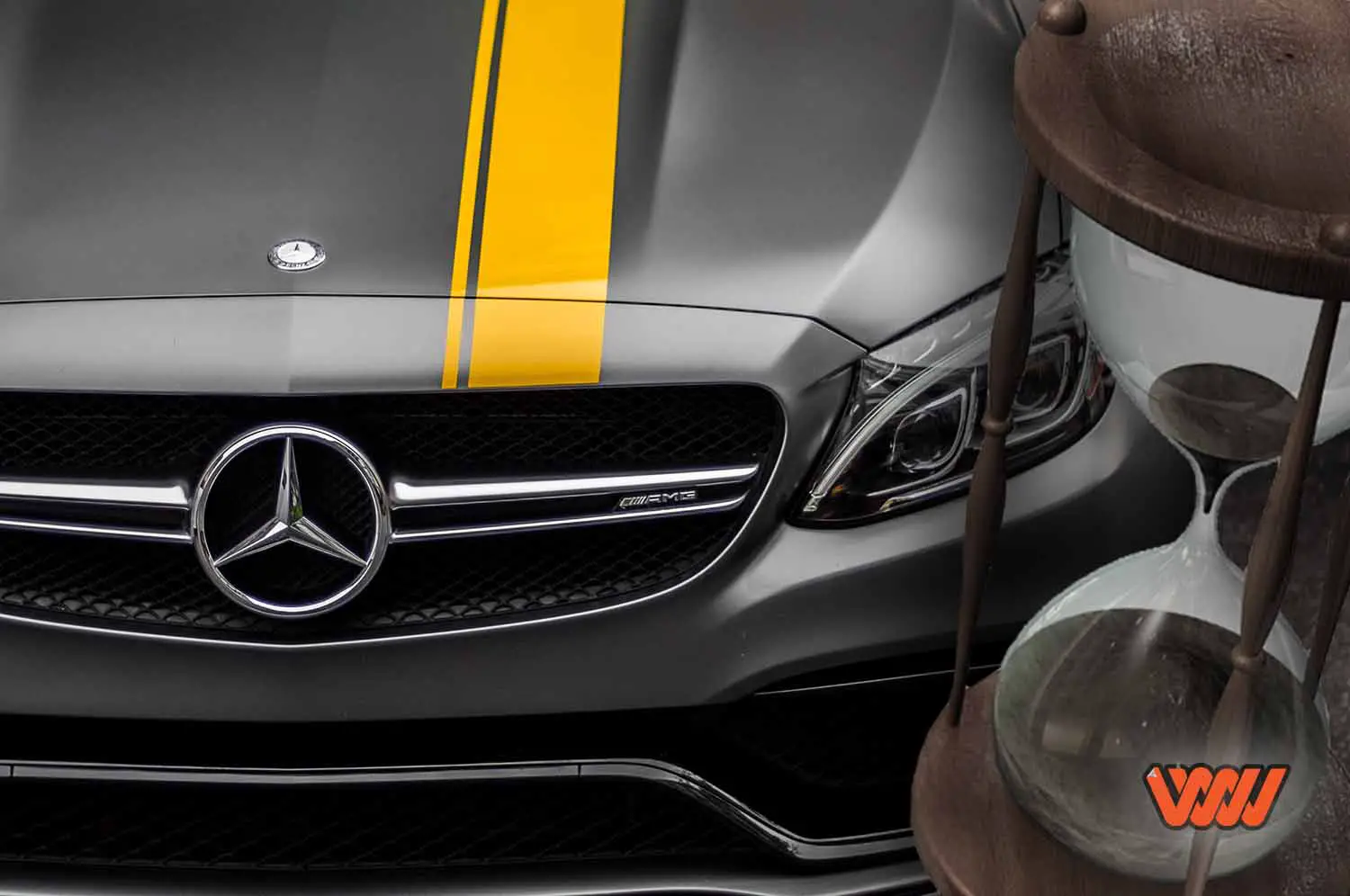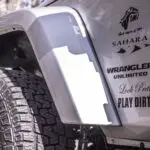Car wraps are an excellent way to advertise a brand or liven up a car without splurging on an expensive paint job. However, they don’t last forever and need to be cared for properly. Therefore, before deciding on whether the investment is worth it, it’s crucial to figure out: “How long does a car wrap last?”.
A car wrap lasts an average of five-six years. However, the timeline can vary depending on factors such as weather conditions, level of care, quality of the wrap, and how well the wrap was installed. The wrap should be stored in a garage when you’re not using the vehicle to optimize its longevity.
The rest of this article will delve into the lifespan of a car wrap in greater detail. It will also take you through how to extend a car wrap’s life and the best ways to care for one.
Can a Car Wrap Last Longer Than Six Years?
A car wrap can last longer than six years, but it’s not always possible. If you have it installed professionally, wash it carefully, store it in a garage, and keep it away from severe weather conditions, it can possibly last a bit longer than six years.
However, once it hits the seven or eight-year mark, you’ll likely start to notice the quality decrease. Some imperfections you may notice as it gets older include:
- Scratches
- Parts peeling away
- Colors fading
You may need to replace your car wrap when it gets to this point. After all, you’re likely using it to advertise something; you certainly wouldn’t want to promote anything on a dirty or worn-out car wrap.
Therefore, although a car wrap can last more than six years, it won’t always be the case. And even if it is, you’ll eventually notice plenty of wear-and-tear.
How Long Do Car Wraps Last In Winter?
Car wraps can last multiple winters if kept out of freezing temperatures when not in use. Storing the car in a garage is the best way to keep it safe and undamaged. If there is snow or ice on the car wrap, avoid harshly removing it.
One of the worst things you can do during winter is to try and scrape off any snow or ice with something even remotely sharp. Scraping a car wrap can damage it and cause certain parts to peel off.
Snow and Ice Shouldn’t Damage Car Wraps
Although it isn’t ideal to subject a car wrap to freezing temperatures every day, it shouldn’t cause too much damage if it was installed correctly and professionally. Since vinyl car wrap is highly durable, adverse weather conditions are generally nothing to be too concerned about.
However, if a car wrap was not installed correctly (for example, the person who installed it wasn’t a trained professional), it is much more likely to get damaged in adverse weather conditions.
Even if you’re absolutely sure regarding the quality of the installment, that’s not to say you should keep your wrap outdoors every day during winter. If you really want your car wrap to last as many years as possible, the garage is the best place to keep it.
Tips on How to Extend a Car Wrap’s Life
There are many ways to extend a wrap’s life, including:
- Wash your car before wrapping it.
- Clean it regularly and carefully.
- Keep it stored in a garage.
- Have it installed correctly.
- Avoid waxing the car wrap.
Now, I want to discuss these points in more detail below.
Wash Your Car Before Wrapping It
Before you decide to wrap your vehicle, it’s essential to clean it. If there is dirt and debris on the surface, it can affect how the wrap bonds to the car paint.
The best way to wash your car before wrapping it is to wash it by hand. This ensures you can rub off as much dirt as possible. You should avoid applying any wax to the vehicle before wrapping, as this can also behave as a barrier between the car paint and the wrap.
Ensure you focus on areas that gather a lot of dirt by using water, soap, and a cloth or sponge. Once you’re done cleaning the car, you should dry it off using a microfibre cloth.
Tip: Rubbing alcohol is excellent for killing germs and making many surfaces clean, including car paint. After washing your car, you can also use rubbing alcohol to further clean it before wrapping.
However, it would be best not to use rubbing alcohol to clean the car wrap itself. Once the car wrap is installed, you should simply wash it with water and soap. No other chemicals are needed to clean a car wrap.
Wash it Regularly and Carefully
By washing your car wrap regularly, you’re preventing a buildup of dirt and debris. A buildup of dirt could subsequently damage the wrap, which is why frequent washing is essential.
However, being careful throughout this process is equally essential. Make sure not to use any brushes or other harsh materials. Anything that may scrape or cause damage while washing should be avoided.
The best cleaning tool to use is a soft cloth or sponge with soap and water. It would be best to avoid automatic car washes because they can cause damage and scraping.
If you want to get it manually washed, make sure to let the car wash staff know about the car wrap and that they shouldn’t use any harsh or abrasive materials.
In between intense washes, you should wipe away any visible dirt that you notice on the car wrap.
Keep It Stored In a Garage
For the most part, it’s a good idea to keep a wrapped car in a garage when you’re not using it. Keeping most things out in the open for long periods can be damaging, and the same goes for car wraps.
Elements like wind, rain, and extreme temperatures can eventually have adverse effects. By keeping it stored away when you’re not using it, you can help make it last a bit longer.
Have It Installed Correctly
It would be best if you went to an experienced, qualified professional when having your car wrap installed. Read plenty of reviews to see how other people’s experiences were before you decide on where to get it done.
Someone who doesn’t do a good job may leave loose edges and not fit the wrap correctly. If this happens, you’ll likely need to have the job redone, which you certainly want to avoid!
You might be tempted to go for the cheapest option you can find, but it isn’t always worth it. Having a car wrap that lasts a long time requires professional and exceptional installation.
Avoid Waxing the Car Wrap
While waxing regular car paint adds a layer of protection and is not damaging, the same can’t be said for car wraps. For this reason, you should always avoid waxing it.
Of course, if your car is only partially covered with a wrap, you can wax the parts that aren’t covered. However, there’s no need to wax the covered parts; all it will do is add a layer of wax that won’t be of any use. The best way to protect a car wrap is by washing it regularly and keeping it clean.
Anything else is unnecessary and possibly damaging in the long run.
Does Sunlight Affect a Car Wrap’s Life Expectancy?
Sunlight can damage a car wrap and reduce its life expectancy, especially after regular exposure. It can also cause discoloration and fading, so you should avoid storing your vehicle in direct sunlight when you’re not using it.
Ultraviolet (UV) rays commonly cause colors to fade because they break down chemical bonds. Therefore, keeping many objects under direct sunlight for extended periods can cause discoloration; this is not specific to car wraps.
Another reason to keep your car wrap out of direct sunlight is that heat can expand vinyl car wraps. This process is known as thermal expansion, and all types of vinyl are susceptible to it.
Therefore, if your car wrap fits your car perfectly and has no room to expand, you can only imagine how this change in size would affect your wrap’s overall look and structural integrity. The best way to avoid thermal expansion is to keep your vehicle away from too much heat and direct sunlight when you’re not using it.
How to Know When to Replace a Car Wrap
You should know to replace a car wrap once it begins displaying signs of discoloration or rusting. Other warning signs include visible scratches and stains that won’t come off. In short, once a wrap starts to look worn and old, you should replace it.
In most cases, you’ll be able to tell whether the car wrap should be replaced or not by simply looking at it. If it looks old and damaged, it’s likely time to replace it.
You May Need to Replace It Sooner Than You Thought
Although car wraps often last up to seven or eight years, they can also become damaged much sooner than that; this usually happens if you haven’t taken proper care of them.
In some instances, car wraps need to be replaced within two or three years if they have been exposed to harmful conditions for long periods. So, don’t be surprised if you’ve only had yours for a short period and it already needs replacing.
Will Car Wrap Damage Car Paint?
Car wrap shouldn’t damage car paint once applied and removed correctly. There will be no paint damage after removing car wrap in most cases. However, if it is not applied by an experienced professional, some paint damage is possible.
Whenever you need to remove the car wrap (and when you get it installed), you should get it done by an experienced professional. If the wrap is applied or removed incorrectly, it can scrape and damage the original paint.
However, if a car wrap has been applied well, it is generally easy to remove. Therefore, if you feel comfortable and confident enough, you could even do it yourself.
The most critical element in the removal process is heat. Once the correct amount of heat is applied to the car wrap, it should come off easily without damaging the car’s original paint. Any device that blows heat can be used, like a hairdryer.
Once the vinyl car wrap is warm enough, you should be able to peel it off.
Below is a helpful tutorial on how to easily remove car wrap using heat:
Does Wind Damage Car Wraps?
Wind can cause damage to car wraps because it moves dirt onto the vehicle. When it’s windy, dirt and debris in the air naturally blow around into the atmosphere, which can make your car wrap get dirty pretty quickly. Keeping your vehicle out of severe windy conditions can prevent some damage.
Even though cold weather doesn’t directly damage car wrap, the wind is often an issue. Not only can the wind blow dirt onto the wrap, but it can also blow bigger, more damaging debris (like small stones or rocks) onto it.
If this happens, it can cause scratches and general wear and tear. Therefore, as you can imagine, keeping your wrapped vehicle away from severe windy conditions will help it last longer.
Excessive Rain Can Cause Damage
Some rain now and then won’t cause any damage to your car wrap. However, if it’s exposed to water and rain for very long periods, it will eventually get damaged, and its life expectancy may shorten.
Excessive, heavy rain can penetrate the wrap, which can affect the adhesive layer. If you live in a region with plenty of heavy rain, it’s undoubtedly a good idea to keep your vehicle sheltered if you want the car wrap to last as long as possible.
Conclusion
In general, a car wrap lasts up to six years. However, with proper care, you may add a year or two to its lifespan.
Here are the most important things to remember from this article:
- Keeping a car wrap clean is highly important.
- Avoid automatic car washes and only wash with gentle, soft cloths.
- Store your wrapped vehicle in a garage if possible.
- Avoid waxing your car wrap.
- Direct sunlight can eventually discolor car wrap.
- Avoid storing your wrapped vehicle in rainy or windy conditions for extended periods.
Photo altered by simplelifesaver.com | Photo attribution: Dhiva Krishna licensed under CC2.0






